How NASA makes those spectacular space images
The James Webb Space Telescope only captures infrared light, but imaging developers can convert the invisible into something both beautiful and scientifically accurate.

The Tarantula Nebula’s chemical composition is remarkably like the conditions in the Milky Way billions of years ago, during peak star formation. This composite of X-ray and infrared observations uses chromatic ordering to show both supernova explosion remnants (royal blue and purple) and clouds of gas (red and orange). Image Credit: X-ray: NASA/CXC/Penn State Univ./L. Townsley et al.; IR: NASA/ESA/CSA/STScI/JWST ERO Production Team
Over the past year, we’ve seen some of the most spectacular images of space yet, courtesy of the new James Webb Space Telescope (JWST). But JWST only observes infrared light, which has wavelengths longer than the human eye can see. So how do NASA’s data image developers turn those observations into colorful, awe-inspiring images? The trick is in “chromatic ordering,” shifting those wavelengths down the spectrum, just as a musician might play a piece of music in a different key. That means keeping the differences between the wavelengths consistent but moving them into the part of the electromagnetic spectrum that we can see.
When that transfer is complete and the images combined, the result is a style that visuals developers like Joe DePasquale of the Space Telescope Science Institute call “representative color”: an image that is aesthetically pleasing and also essentially a data visualization. One reason JWST records particular wavelengths of light is because they can indicate the presence of specific elements. Because these images are created using chromatic ordering, it’s possible to “read” them a bit like a map: a red area is rich in hydrogen or sulfur, while blue contains oxygen.
New Eye on the Universe, premiering February 22 at 9 pm on PBS:
Some shades might look muddy next to one another or create an image that’s too bright, almost lurid, so DePasquale might make an adjustment, or raise the contrast to make the colors pop. Still, in every stage of the process, “we’re always respecting the data,” he told NOVA. “We're not trying to introduce things that weren't there in the data to begin with, and we're not trying to remove things that are there.”
Here are just a few examples of the beautiful images created from the observations of the most powerful space telescope humanity has ever built—with a little help from chromatic ordering.
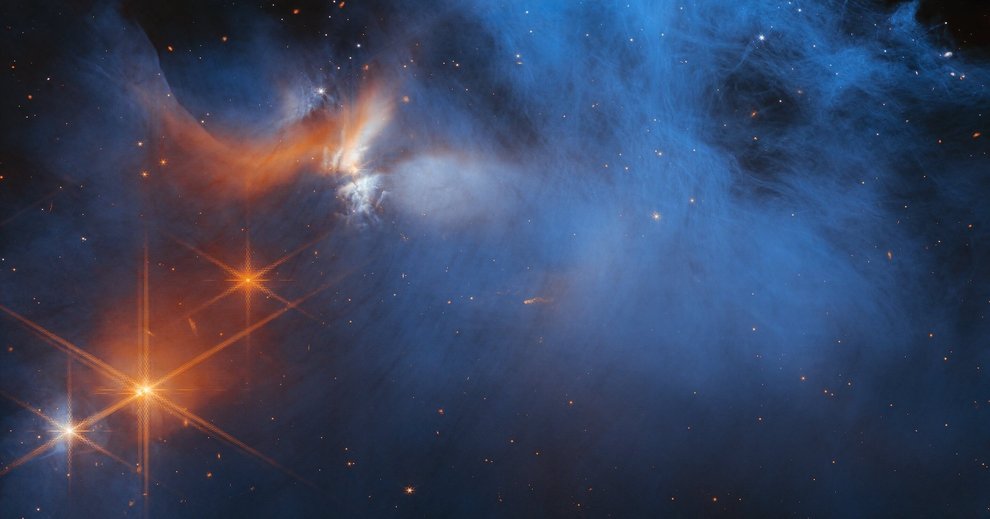
Image Credit: NASA, ESA, CSA, and M. Zamani (ESA).
Molecular Cloud
This moody watercolor-like image shows what’s called a molecular cloud, where stars and planets are born. The remarkable thing about this cloud is that it’s so cold that many different kinds of molecules are frozen and suspended within it—not just water, but also more complicated molecules like methane and ammonia. These molecules were detectable thanks to light from the background stars shining through the cloud.
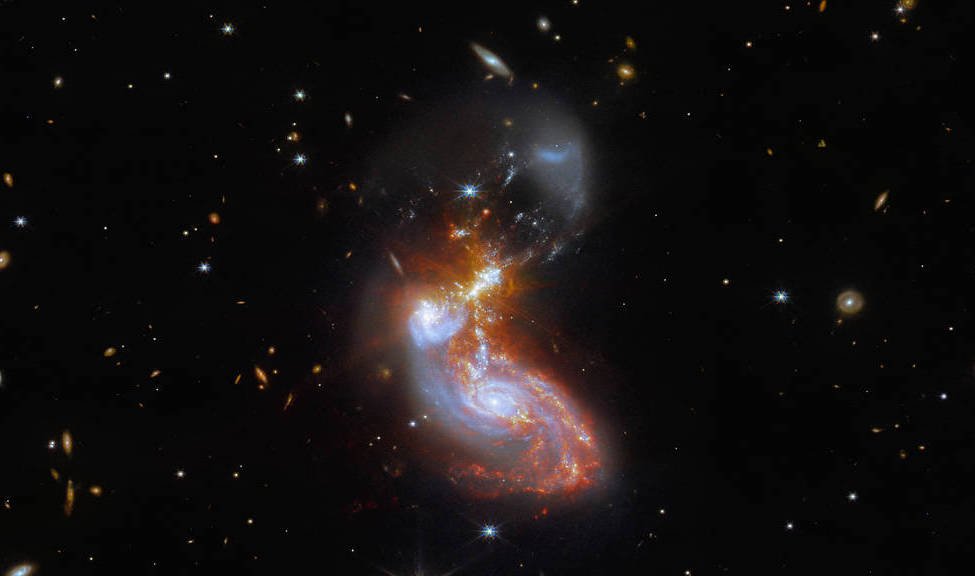
Image Credit: ESA/Webb, NASA & CSA, L. Armus, A. Evan
Merging Galaxies
This pair of merging galaxies, known as II ZW 96, was chosen as a target to help test JWST because it’s so bright at infrared wavelengths. This image shows how the gravity of the merger is slowly twisting both galaxies out of shape, their luminous cores connected by bright tendrils of star-forming regions.
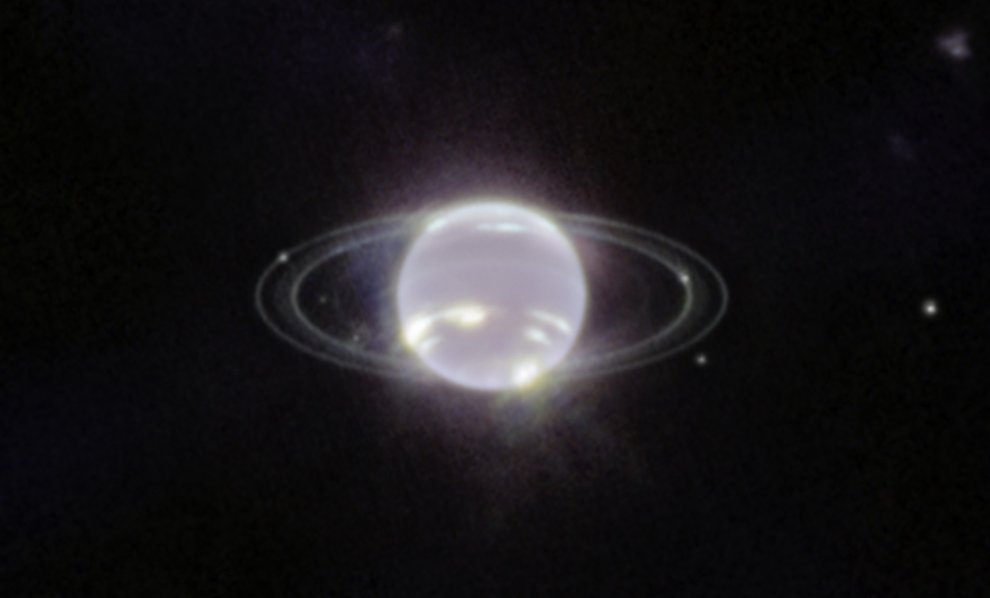
Image Credit: NASA, ESA, CSA, STScI
Neptune's Rings
This image of Neptune represents our clearest view of the planet's rings since Voyager 2’s flyby in 1989. The telescope’s near-infrared camera gives us amazing detail, showing both the brighter, stronger belts and more subtle bands of dust. This view of Neptune is also unique because the planet’s methane gas registers very dark in infrared, rather than the cool blue we often see, and is broken up by high-altitude methane-ice clouds which reflect sunlight and appear bright white.
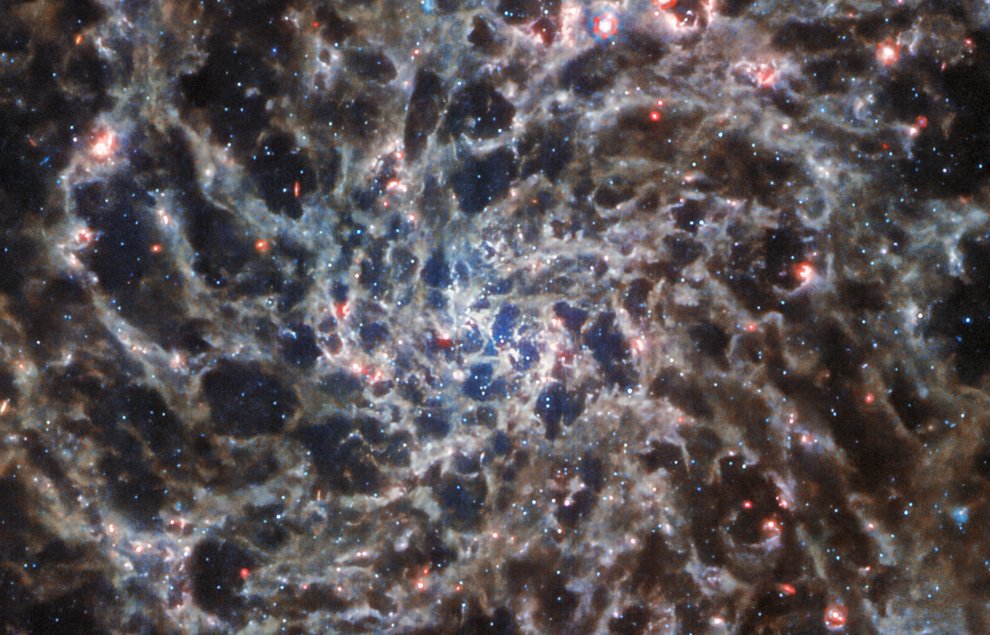
Image Credit: ESA/Webb, NASA & CSA, J. Lee and the PHANGS-JWST and PHANGS-HST Teams
Galaxy IC 5332
Here, we see the “bones” of galaxy IC 5332, a structure that is cloaked in dust. But by observing in mid-infrared light, JWST can look through that dust to see the fingers of gas fanning out within IC 5332. The telescope’s specialized mid-infrared instrument must be kept much colder than its other sensors—only a few degrees above absolute zero.
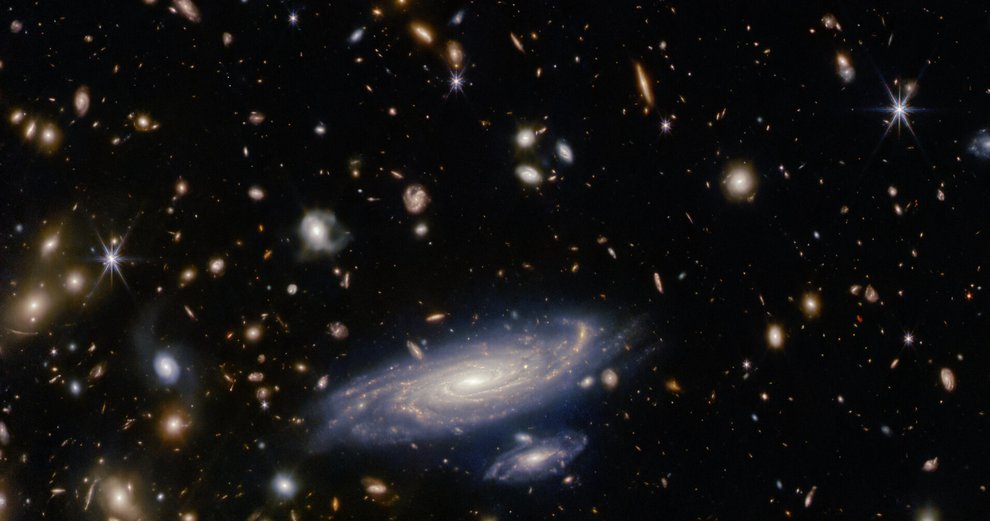
Image Credit: ESA/Webb, NASA and CSA, A. Martel
Galaxy Field
This photo was taken during JWST’s calibration phase, to test the telescope’s ability to find the most ancient galaxies. It was designed specially to find galaxies that are so far away that, as their light travels toward us and the universe expands, that light has been stretched all the way into the infrared range. Those more orange-red galaxies can be compared to LEDA 2046648, the spiral galaxy toward the bottom of the image. Even at a billion light years away it is closer to Earth.



